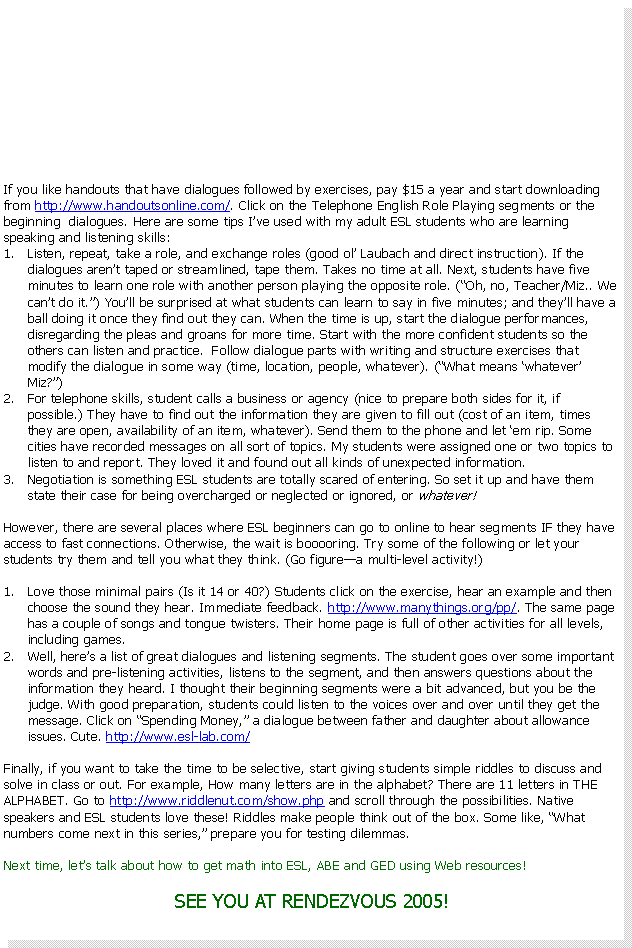


|
Four Corners Virtual Resource Center ACDE.CARE/Adult Education and Family Literacy (AEFL) Service through the Unlimited Learning Adult Education Program
|
|
Leecy Wise http://www.swadulted.com 4cvrc@swadulted.com 970-562-4418
|
|
Volume 4 Issue 2, February 2005 |

|
What do beginning ELL’s (new “in” reference for English Language Learner) need? It depends. A lot depends on their literacy in their own language. Most need to listen and speak before they are ready for much else, but, again, it depends. Following are some possible activities for learners who are starting to gain confidence communicating, especially with the public! |